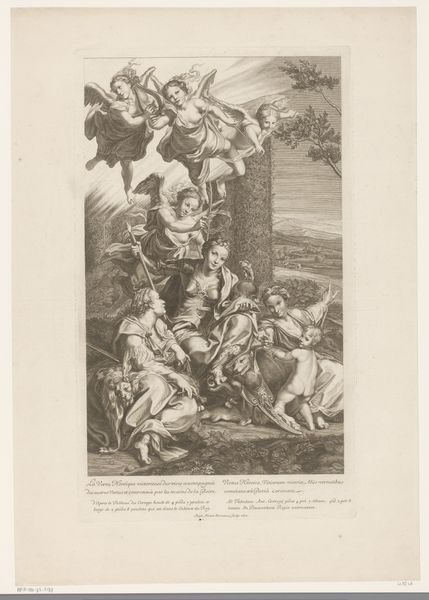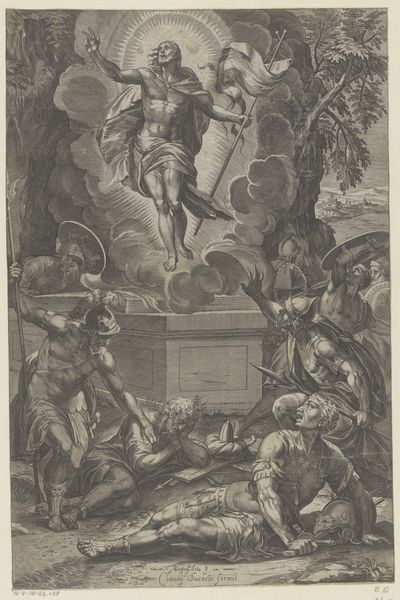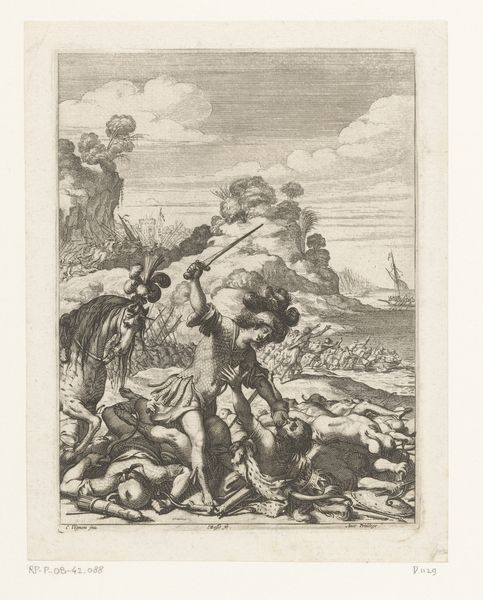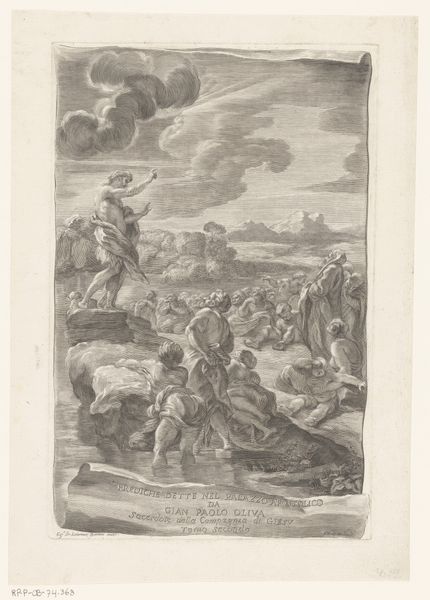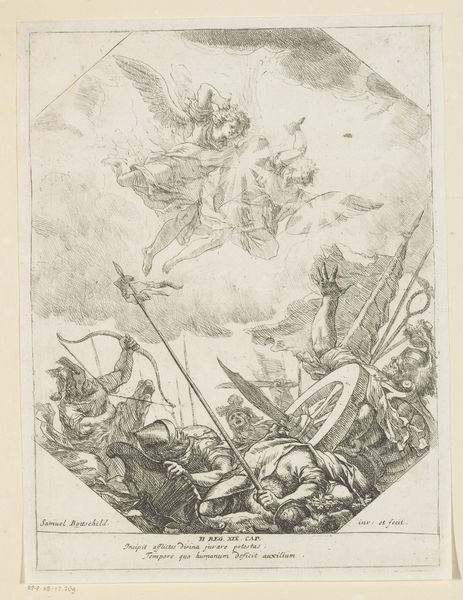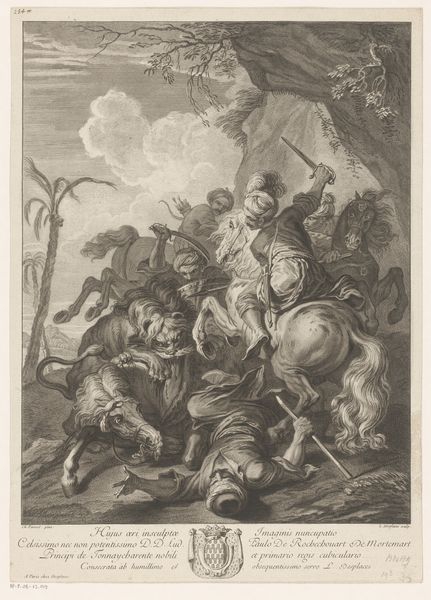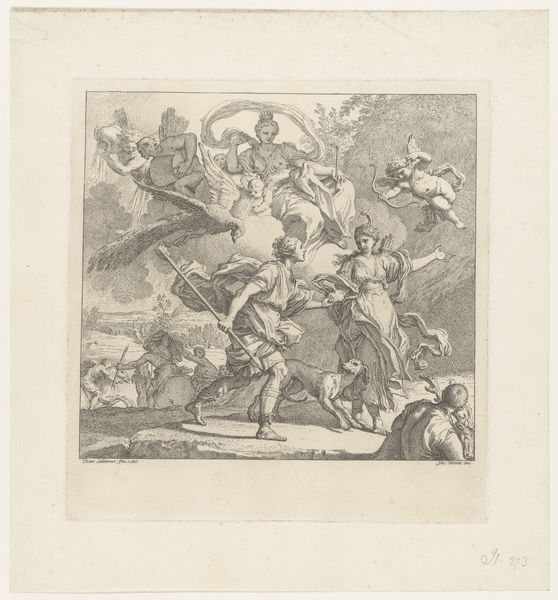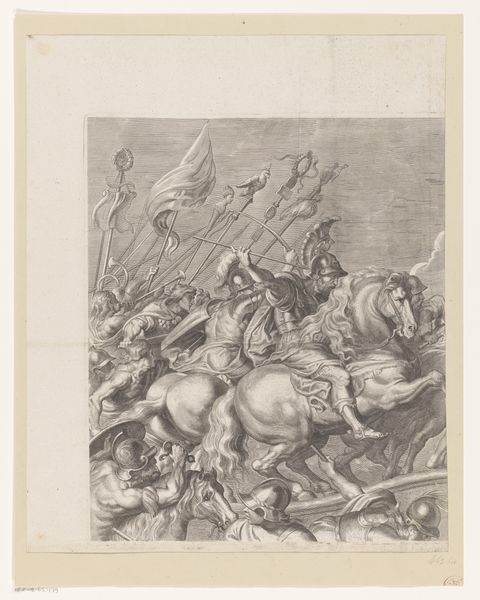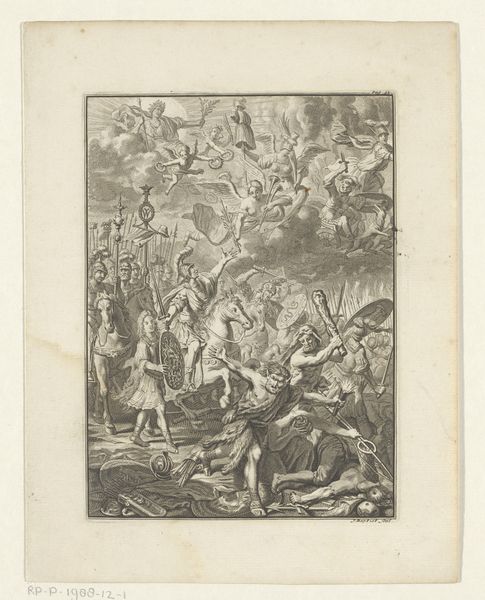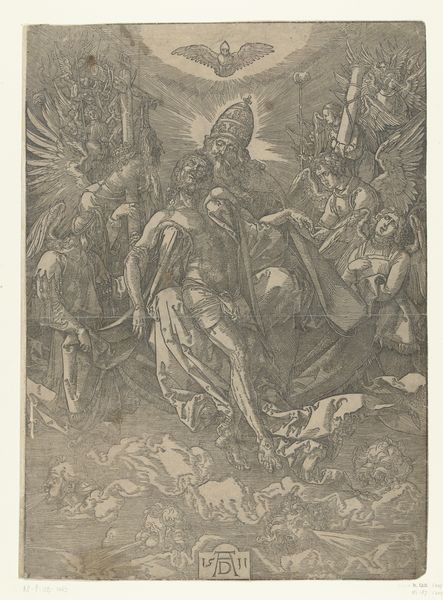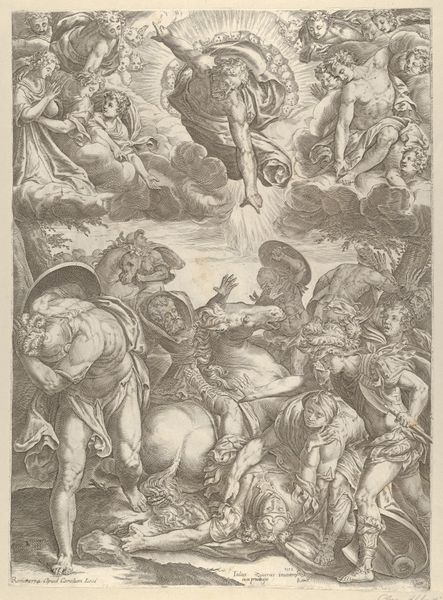
Allegorische voorstelling met het portret van Hans Adam von Schöning 1691 - 1709
0:00
0:00
#
pencil drawn
#
toned paper
#
light pencil work
#
pencil sketch
#
personal sketchbook
#
ink drawing experimentation
#
pen-ink sketch
#
sketchbook drawing
#
pencil work
#
sketchbook art
Dimensions: height 443 mm, width 323 mm
Copyright: Rijks Museum: Open Domain
This allegorical print, portraying Hans Adam von Schöning, was made by Johann Christoph Boecklin. The print uses a traditional intaglio process, likely etching and engraving on a copper plate, to create an intricate design of symbolic figures. The material properties of the metal plate are crucial. Its hardness allowed for the fine lines and detailed textures that define the image, while the labor-intensive etching and engraving processes reflect the skilled handcraft involved. The print’s appearance results from the artist’s manipulation of the metal, using acid to bite into the surface and tools to incise lines, which hold the ink during printing. The social significance of this print lies in its production within a system of skilled labor and patronage. Boecklin, as a printmaker, would have been part of a network of artisans producing images for both artistic and political purposes. The creation of such a detailed print represents a significant investment of time and skill, reflecting the value placed on visual communication and the dissemination of ideas in the early modern period. Ultimately, understanding the materials and processes involved helps us appreciate the print's cultural and historical context, moving beyond simple aesthetics.
Comments
No comments
Be the first to comment and join the conversation on the ultimate creative platform.

